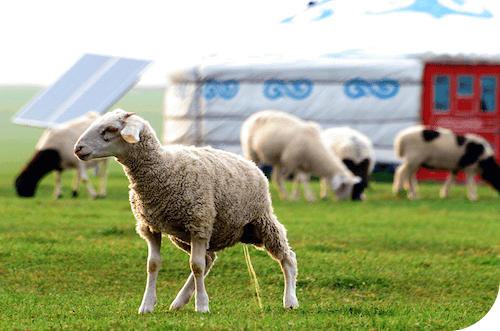When most people think of solar farms, they picture panels and power—not wildlife. But when managed thoughtfully, solar fields can become havens for pollinators, birds, and other beneficial species. One practice helping to make this possible is solar grazing.
More Than Vegetation Control
Sheep do an excellent job keeping grass and weeds under control, but their impact goes beyond mowing. By replacing traditional mowing and herbicides, solar grazing:
- Reduces soil disturbance caused by heavy equipment.
- Minimizes chemical use, protecting native plants and insect life.
- Encourages a diverse mix of vegetation, which benefits pollinators like bees and butterflies.
A Healthier Ecosystem
Healthy pollinator populations are critical for agriculture and the environment. Solar sites that use grazing often plant pollinator-friendly seed mixes alongside panels. Sheep help maintain these meadows by gently managing plant growth without stripping the land bare. The result is a habitat that supports pollinators, improves soil quality, and enhances local biodiversity.
Energy and Ecology, Side by Side
By pairing renewable energy production with ecological stewardship, solar grazing turns solar fields into multi-purpose landscapes. They generate clean electricity, provide farmers with new opportunities, and restore valuable habitats—all on the same piece of land.
